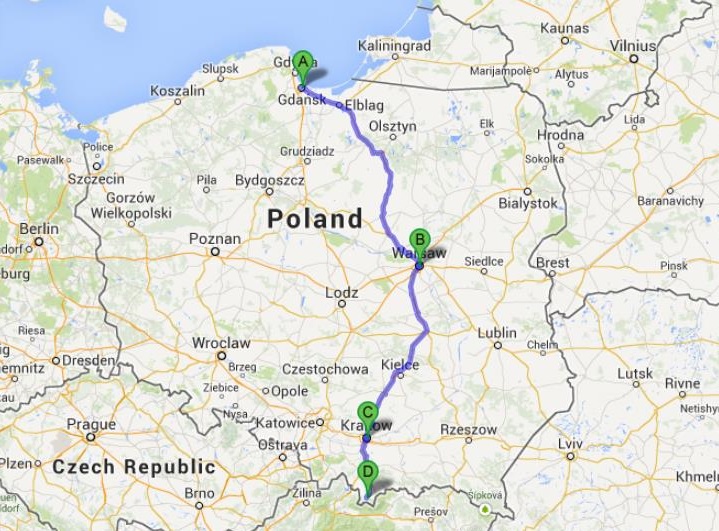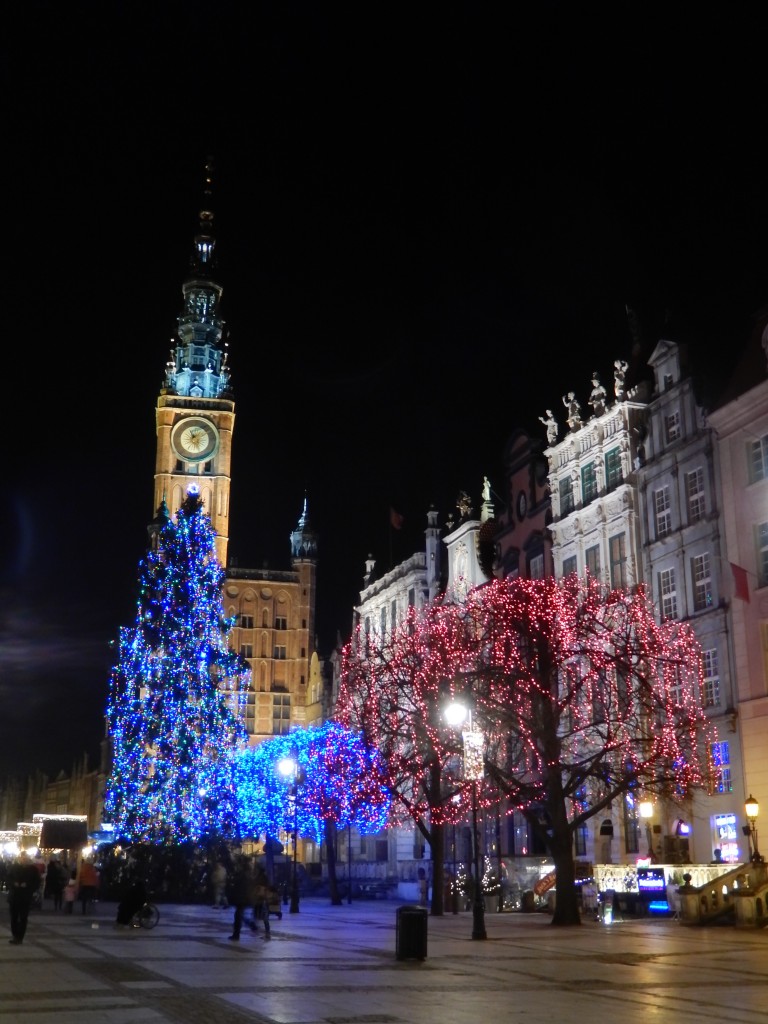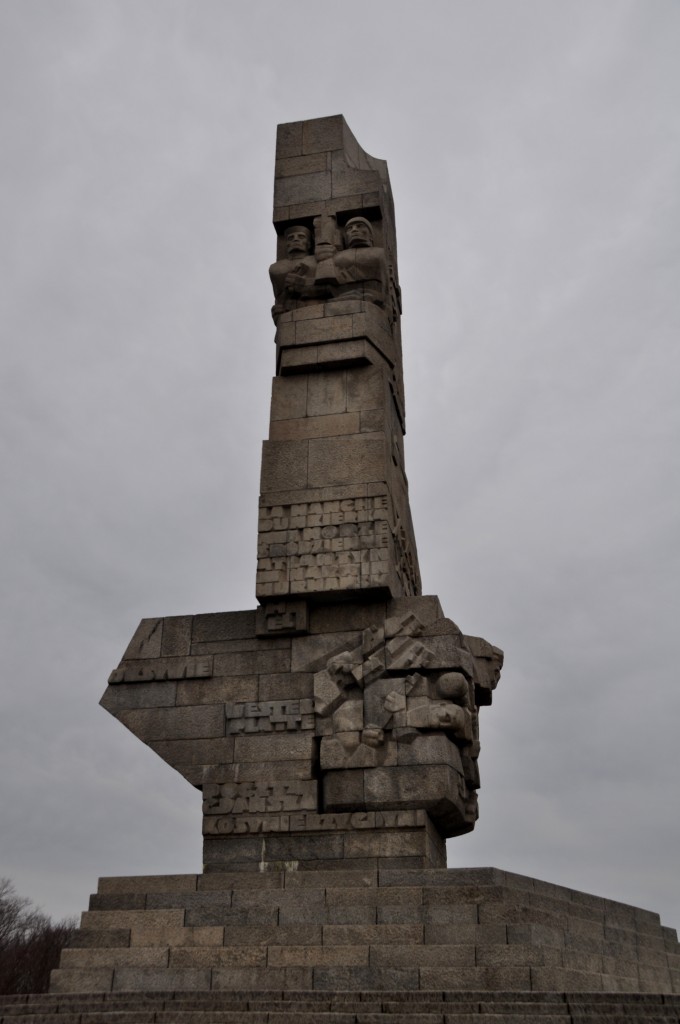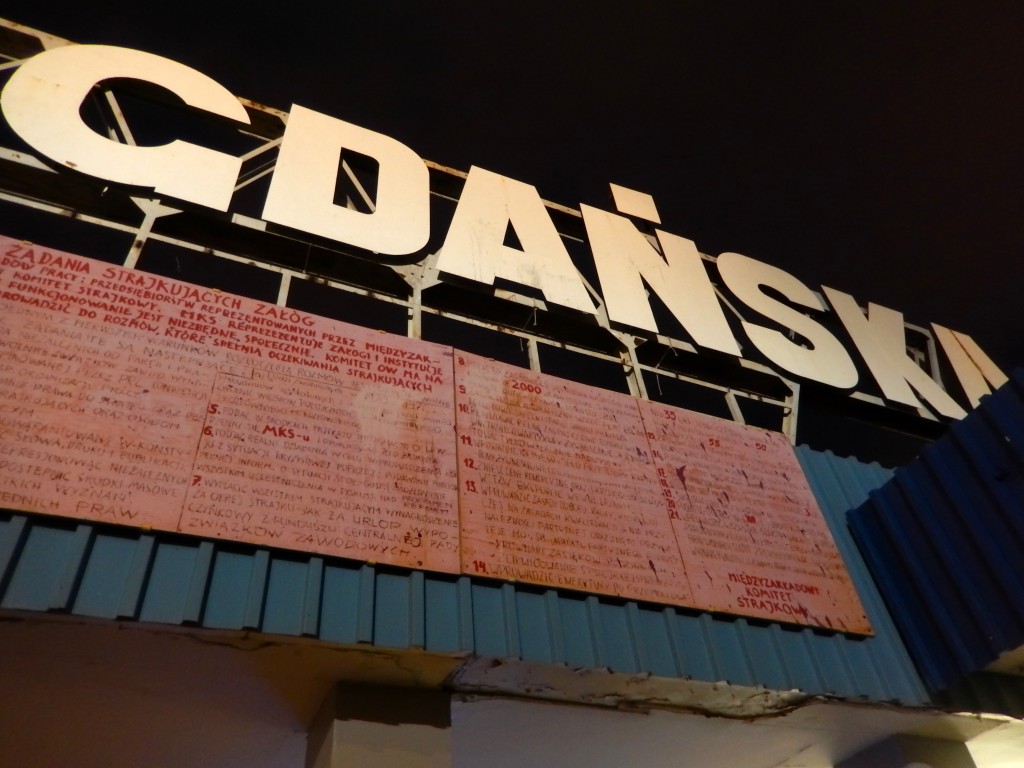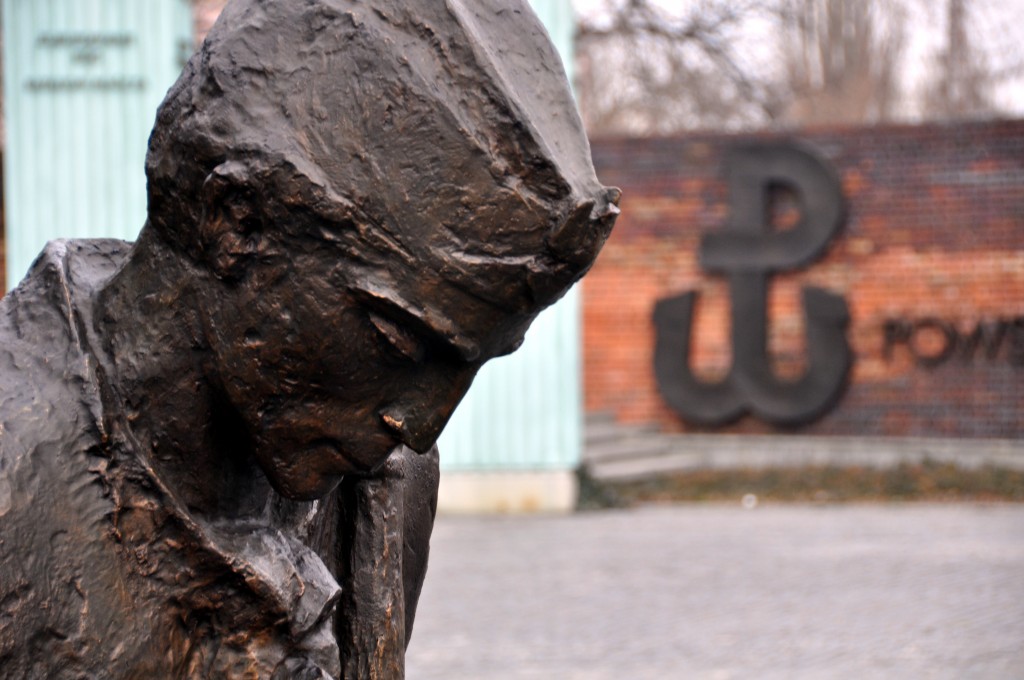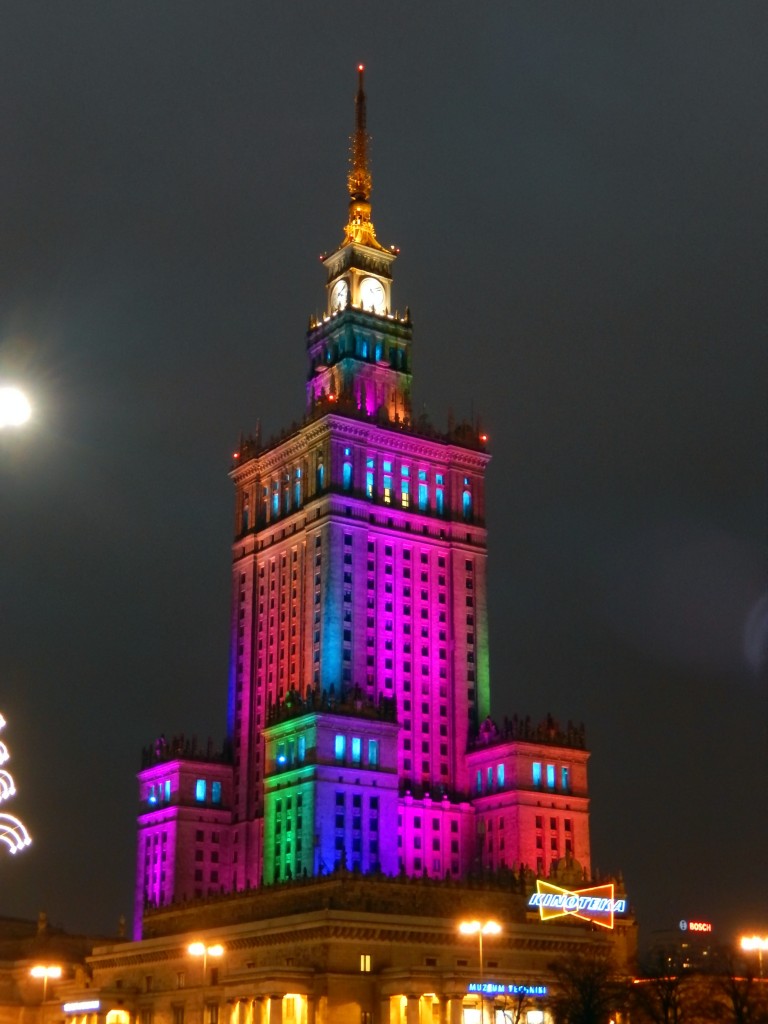We were finally able to hit up the last of the nine countries that surround Germany: Poland! In fact, we covered it border to border: from the Baltic Sea to the Tatra Mountains!
GDANSK – Right on the Baltic Sea, Gdansk was our first stop in Poland. We got to see and learn so much during our visit, thanks to our gracious hosts, the current Olmsted Scholar and his wife who live there. At this time of year the sun sets in Poland in the 3:00pm hour, which was fine by us, because Gdansk was still outfitted in beautiful holiday décor!
During the daylight hours we visited Westerplatte, the site where WWII began on September 1, 1939. Hilter viewed Poland as a key starting point for expanding Nazi Germany and conquering Eastern Europe. Poland unfortunately never had a chance against the Third Reich and seven days later Nazi forces had already advanced to Warsaw. Ultimately, this date marks the start of an oppressive 20th century for Poland. The monument at Westerplatte stands in memory to the Polish soldiers who died defending Gdansk, but simultaneously serves as evidence of the heavy hand of communism. It reminded Joe and I of the Karl Marx statue in Chemnitz, Germany – residual evidence of communism in East Germany.
Gdansk is also were Solidarity, one of the initial (and key) anti-communism civilian social movements, originated. We visited the Gdansk Shipyard, where a strike of thousands of ship workers in August of 1980 marked the first successful civil resistance against the communist dictatorship. The 21 demands made by strikers still hang above the gates of the shipyard.
WARSAW – We took our first long-distance bus from Gdansk to Warsaw and arrived a comfortable five hours later! There was a super nasty burning car + truck accident about five cars ahead of us, which closed the “highway” and had me thinking that our five hour journey would turn into ten or fifteen. However, the locals used it as a cigarette break and we were on our way again in no time. Maybe this happens on Polish highways more often than we would dread to think (Yikes!).
Warsaw is the city of brave uprisings. The Warsaw Ghetto Uprising occurred in April of 1943 and was the largest revolt of Jewish people against the Third Reich during the war. As the SS was making plans to evacuate the ghetto and deport all the residents to the Treblinka concentration camp, several hundred Jews were collecting anything that could be used as ammunition against the Nazis. Sadly, they were not successful and tens of thousands of ghetto residents died during the uprising. The remaining residents were deported. They knew they wouldn’t be successful, but how could they just sit around and wait to die? I found a really moving quote about the ghetto uprising inside the museum at Auschwitz. It was made by Marek Edelman, the last living member of the Warsaw Ghetto Uprising Leadership, and helped me to understand the mindset of the uprisers: “The point was not to let them butcher us when they came for us next. It was a matter of choosing how to die.”
This event is not to be confused with the Warsaw Uprising, which started on August 1, 1944 and was carried out by the Polish Home Army. For 63 days, Polish fighters held the Nazi forces at bay. More than 40 thousand Polish soldiers and 180 thousand civilians were killed or wounded during the uprising, which was carried out with little support from Allied troops. Unfortunately, this uprising was also not successful and the Nazi forces eventually took over the city. Warsaw was looted, destroyed, burned, and ultimately razed to the ground.
The Kotwica (the ‘P’ and ‘W’ that look to form an anchor) is a symbol for polish resistance fighters and Poland’s struggle for independence. It can be seen all over Warsaw – on memorials, on buildings, on/in museums. Its presence throughout the city feels like a constant reminder of Warsaw’s courageous attempts to free itself from oppression. Warsaw has had a tough go over the decades.
Nearly 90% of Warsaw was destroyed during WWII, and then rebuilt under the communist regime starting in the 1950s. The city is a weird mix of new architecture meant to look original, original buildings which survived the war, and Eastern Bloc architecture, which is exactly what you know/think it to be. We learned a lot about the Palace of Culture and Science, a gift to Poland from the Soviet Union, during our Communist-themed walking tour. It is satirically viewed as an homage to Stalin’s manhood, because there are numerous versions of this building all around the former communist countries of eastern Europe, providing an ugly reminder of the communist regime to many. Personally, I don’t think the Palace is hideous at all, but I guess I don’t associate it with memories from the toughest century in Poland’s history.

